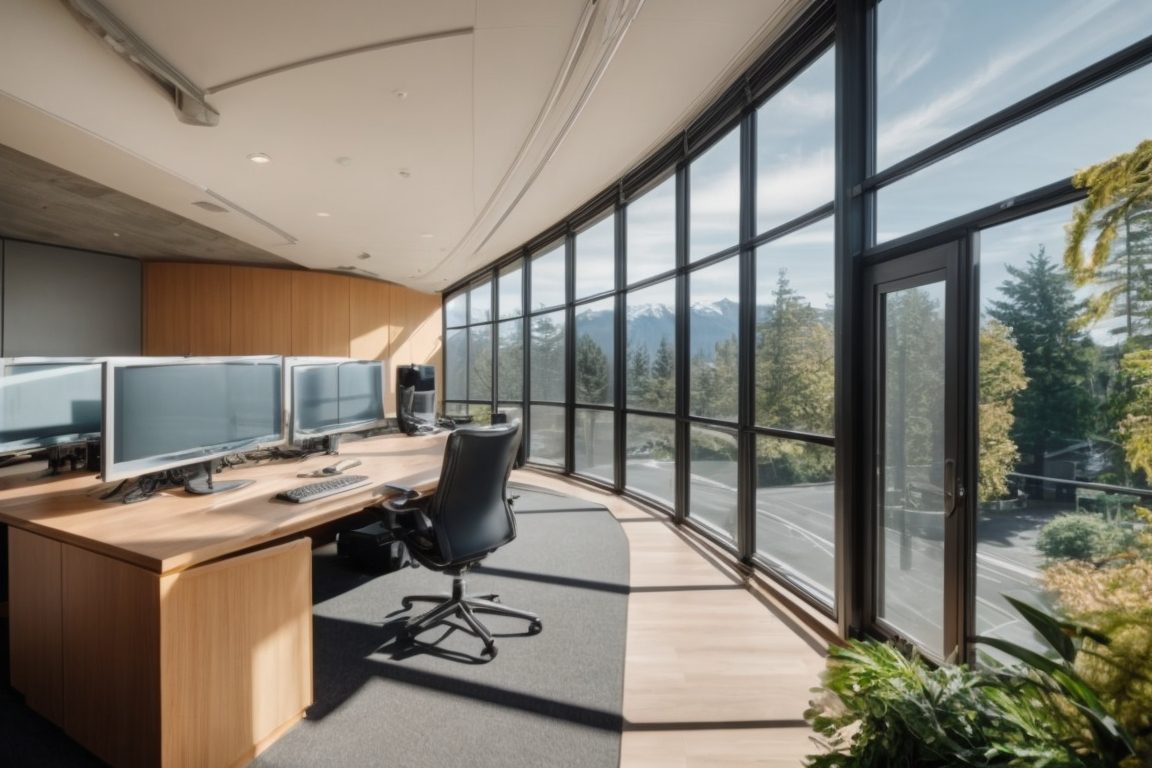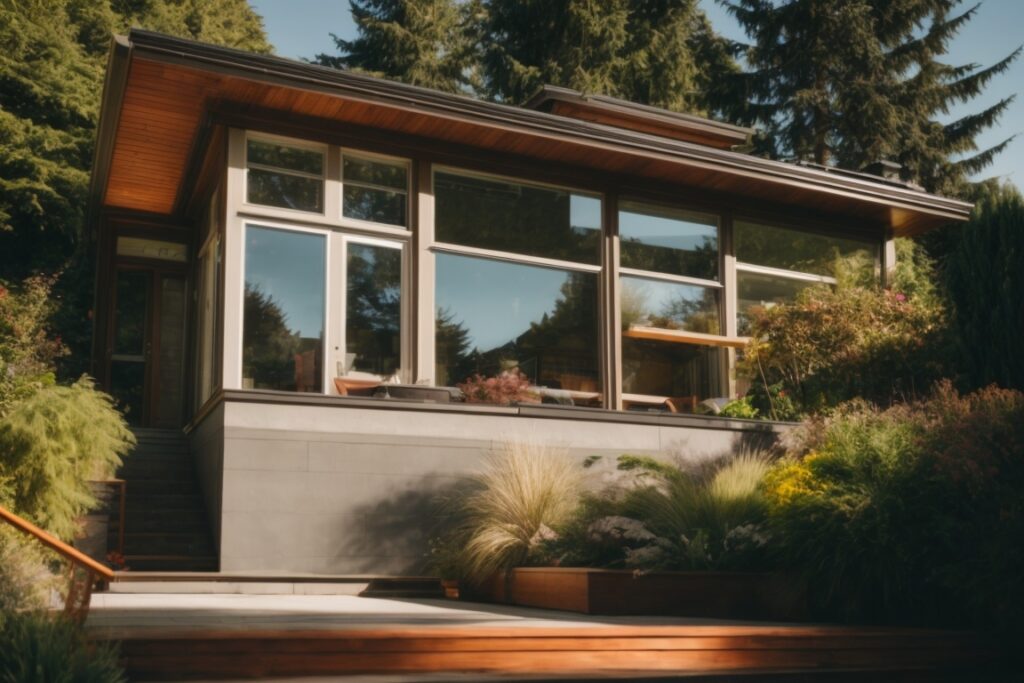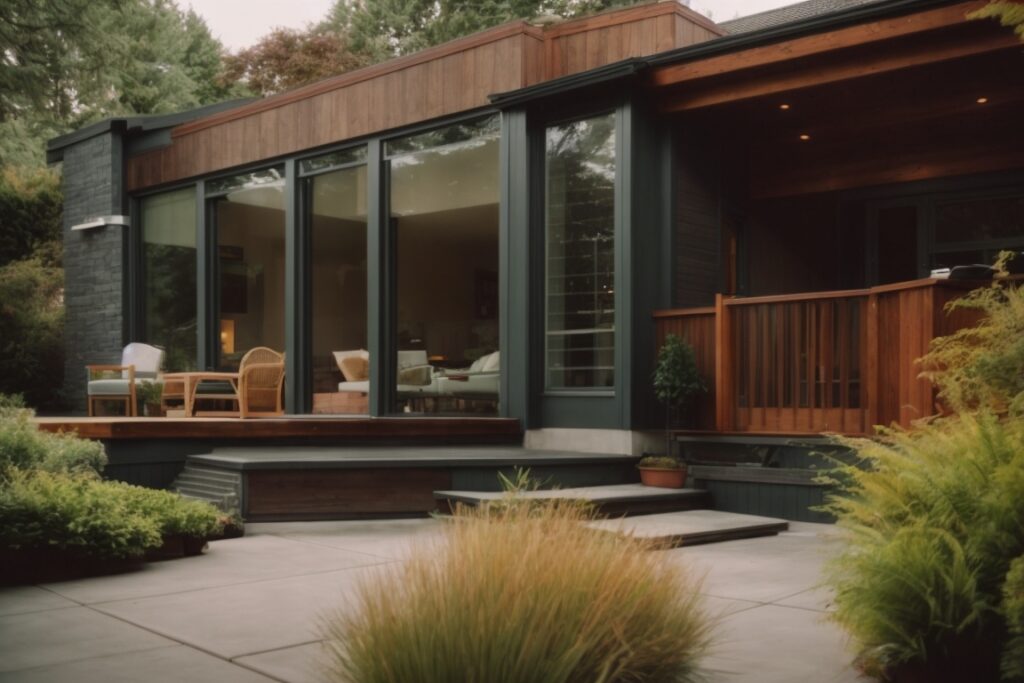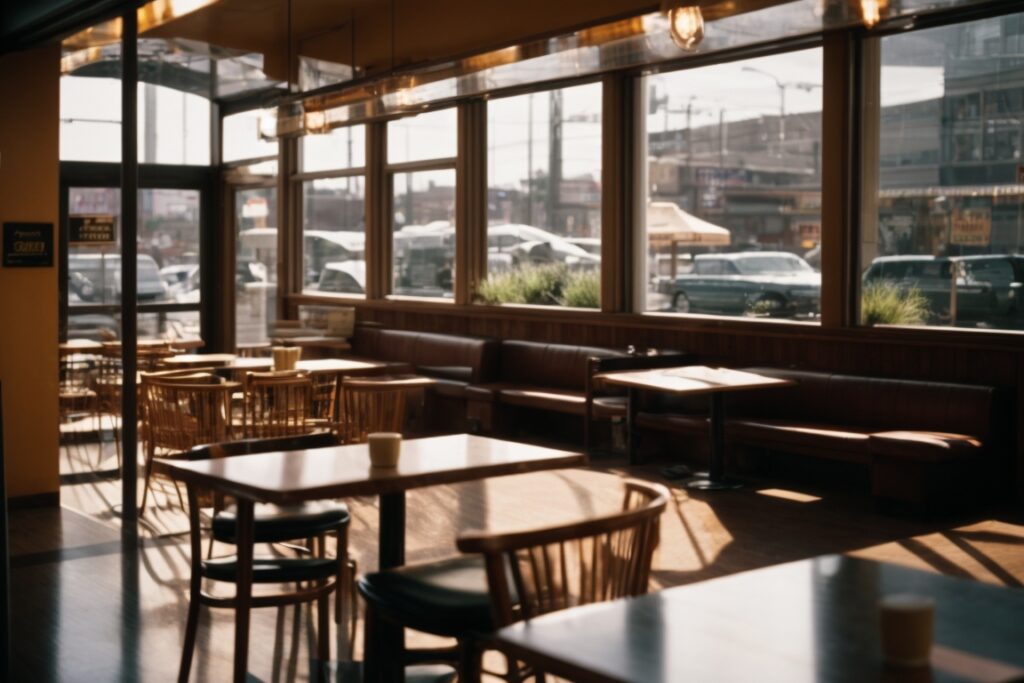Enhancing Urban Sustainability with Climate Control Window Film in Seattle
In Seattle, a city known for its innovation in sustainability and architecture, the introduction of climate control window film has sparked new discussions about energy efficiency in building design. While Seattle is progressive in many environmental areas, there is still a significant opportunity to reduce energy consumption and carbon footprints through improved architectural techniques. Climate control window film represents a transformative solution for these challenges, yet awareness of its extensive benefits is not as widespread as it should be.
This advanced material not only enhances the aesthetic appeal of buildings but also plays a crucial role in energy conservation, reducing the need for artificial heating and cooling. Despite these advantages, many Seattle developers and homeowners are yet unaware of how climate control window film can seamlessly integrate into and enhance their properties. The film helps maintain stable indoor temperatures, leveraging Seattle’s variable climate to reduce reliance on energy-intensive HVAC systems.
As energy costs rise and environmental regulations become more stringent, the importance of adopting energy-efficient technologies like climate control window films becomes more apparent. This innovation is not just about meeting regulatory demands; it’s about moving towards a more sustainable and economically feasible future in urban development. The challenge lies in shifting public perception and knowledge about these materials from a niche luxury to a mainstream necessity.
Understanding Energy Inefficiency in Seattle Homes
In the heart of Seattle’s evolving architectural landscape, the primary issue confronting both homeowners and businesses alike is energy inefficiency caused by traditional glass windows. These standard windows are notorious for poor insulation qualities, leading to significant heat loss during cooler months and excessive heat gain during warmer months. What exacerbates the issue is Seattle’s climate, characterized by both sunny summer days and chilly, wet winters, demanding a versatile solution that can address fluctuating thermal conditions effectively.
The reliance on heating and cooling systems due to ineffective window installations not only spikes energy bills but also increases the carbon footprint of buildings, contradicting the growing eco-conscious initiatives across the city. This challenge calls for an innovative approach that preserves both the aesthetic appeal of structures and enhances their energy performance. Hence, the integration of climate control window film emerges as a crucial development for sustainable architectural design in Seattle.
Startling Statistics on Seattle’s Energy Consumption
In Seattle, climate control window film is not just about comfort; it’s an energy imperative. Studies indicate that without energy-efficient window films, Seattle buildings could see a 25% increase in heating and cooling costs. Moreover, windows alone are responsible for up to 30% of total heat loss in many Seattle homes. Considering that Seattle experiences an average of 226 cloudy days per year, the capability of window films to minimize heat loss while maximizing natural light absorption is crucial for enhancing energy efficiency in a city known for its overcast weather.
The Burden of Inefficient Window Design in Seattle
In Seattle, where variable weather patterns range from sunny and mild to wet and frigid, managing indoor climate control is a persistent challenge. Conventional glazing or inadequate window films complicate this largely due to their inefficiency in adapting to rapidly changing external temperatures, leading to significant discomfort for residents. The primary problem isn’t just the fluctuation in indoor temperatures; it’s also the steep cost associated with attempting to maintain a consistent and comfortable indoor environment.
Homeowners who persist with older or inefficient window solutions find that their HVAC systems need to work overtime to combat the heat loss during winter and heat gains during summer. This not only leads to increased energy consumption but also inflates monthly utility bills significantly. Furthermore, there’s the issue of carbon footprint. Excessive use of heating and cooling systems contributes to higher carbon emissions, which is concerning for environmentally conscious Seattle residents.
There’s a discomfort factor as well; living spaces that either become too cold or too hot, depending on the time of the year, can severely impact a resident’s comfort and even health. This ongoing issue necessitates frequent thermostat adjustments, causing both annoyance and increased wear and tear on home heating and cooling systems, which could also lead to costly repairs or replacements sooner than expected. Thus, the inadequacy of traditional or standard window films presents not only a financial burden but also challenges to living comfort and environmental responsibility.
Understanding the Problem: Impacts of Inadequate Climate Control in Seattle Homes
In Seattle, where the climate can swing between overcast, rainy days and surprisingly sunny stretches, maintaining a comfortable and energy-efficient home environment presents unique challenges. The core issue here stems from the city’s varying temperatures and brightness levels, placing a heavy burden on traditional heating and cooling systems. Without adequate climate control measures, residents often face inflated energy bills and discomfort in their own living spaces.
Ineffective temperature management not only leads to higher utility costs but can also cause wear and tear on HVAC systems, increasing the frequency and cost of maintenance. Moreover, excessive sun exposure during brighter days accelerates the fading of furniture and floors, affecting both the aesthetic and monetary value of home interiors. Climate control window film offers a promising solution by moderating indoor temperatures and reducing glare—key factors that affect living conditions directly. Understanding this problem is crucial for Seattle homeowners aiming to enhance their comfort efficiently and protect their investments in home furnishings.
Enhancing Office Environments in Seattle with Climate Control Window Film
Consider the example of a renowned tech company in downtown Seattle that struggled with excessive heat gain and glare in their office space. By installing climate control window film, they achieved significant improvements in temperature regulation and employee comfort. This led to a noticeable reduction in their cooling costs during the summer months and enhanced the aesthetic appeal of their workspace. Such practical applications of climate control window film in Seattle’s architectural landscape serve as compelling reasons to consider this energy-efficient upgrade.
The Consequences of Ignoring Climate Control in Seattle Architecture
Failing to implement climate control window film in Seattle buildings can lead to a series of detrimental effects, particularly in terms of energy efficiency and structural integrity. Neglecting this crucial aspect of modern architectural design does not just result in higher energy costs; it can also significantly impact the lifespan and functionality of building elements.
Without the protective benefits of climate control window films, buildings are exposed to intense and often harmful solar radiation. Over time, this can lead to fading of interior furnishings, degradation of materials, and an increase in thermal gain, which necessitates the use of more air conditioning. The economic implications include not only elevated utility bills due to increased HVAC load but also potential costly repairs and replacements of damaged interiors.
Moreover, ignoring the installation of effective window films overlooks the potential of modern technology to enhance both the aesthetic and functional quality of a building. This can detract from the overall value of the property, making it less attractive to prospective buyers or renters in the competitive Seattle market. Therefore, incorporating climate control window film is not just about improving energy efficiency but also about protecting and enhancing investment in property.
Economic Impact of Neglecting Climate Control Window Film in Seattle
For Seattle homeowners, overlooking climate control window film can lead to increased economic strain. The absence of this film often results in higher energy bills due to poor thermal insulation, forcing heating systems to work harder during cooler months and air conditioning units to overcompensate in warmer periods. This not only spikes utility costs but also demands more frequent HVAC maintenance, amplifying overall household expenses year-round.
Climate Control Window Film: A Vital Addition to Seattle’s Architectural Design
In the damp and often unpredictable climate of Seattle, climate control window film offers a compelling solution to common architectural challenges. For homeowners and businesses alike, managing interior temperatures can be a perennial concern, with the dual goals of energy efficiency and maintaining aesthetic appeal. By integrating climate control window film, these entities can address and alleviate these concerns effectively.
Firstly, this innovative film significantly enhances energy efficiency. By blocking out excessive solar heat during warmer months, it reduces the reliance on air conditioning systems, which can lead to substantial cost savings over time. During colder seasons, the film helps to retain indoor heat, providing an insulation effect that minimizes heating requirements. This year-round energy regulation is crucial in a city like Seattle where environmental consciousness is high and energy efficiency is often a top priority for property design and renovation decisions.
Beyond just functional benefits, climate control window film also enhances aesthetic appeal. It does so without altering the external appearance of historical or contemporary buildings. This feature is particularly valuable in Seattle’s diverse architectural landscape, which blends old-world charm with modern innovation. The seamless integration of this film supports architectural integrity while contributing to a building’s greener footprint.
Thus, by promoting both energy efficiency and preserving visual aesthetics, climate control window film not only elevates the living and working environment but also aligns with Seattle’s sustainable urban development goals. This positions it as an essential consideration for anyone looking to improve their property’s functionality and environmental impact.
Optimizing Climate Control with Window Film in Seattle
Climate control window film has emerged as an effective solution for enhancing both energy efficiency and aesthetic appeal in Seattle’s architectural designs. This innovative product is specifically engineered to address the unique challenges posed by Seattle’s climate, which fluctuates from rainy and overcast to surprisingly sunny.
By applying climate control window film to glass surfaces, buildings can significantly reduce the heat gain during sunny days, thus minimizing cooling needs and energy costs. This window film helps in retaining indoor heat during colder seasons, providing a year-round balance that aids in reducing overall heating expenses.
The dual functionality of this window film not only optimizes energy consumption but also adds a layer of modern aesthetic to buildings. Available in various shades and finishes, it allows property owners and architects in Seattle to maintain a sleek, contemporary look while achieving functional benefits. This fusion of utility and style makes climate control window film a versatile choice for the city’s architectural landscape.
Benefits and Features: Climate Control Window Film in Seattle
Climate control window film provides numerous benefits tailored to the unique Seattle climate. It enhances energy efficiency, significantly reducing heating costs in winter and cooling expenses in summer. This film also protects against harmful UV rays, which helps in preventing furniture and fabrics from fading. Furthermore, its application boosts the aesthetic appeal of any property, adding a sleek, modern touch to windows without obstructing the scenic Seattle views. With these outstanding benefits, climate control window film is an ideal choice for both residential and commercial buildings in Seattle.
Testimonials: Enhancing Seattle Buildings with Climate Control Window Film
Seattle’s unique architectural landscape has seen a significant improvement with the integration of climate control window film. A noteworthy testament comes from the Smithson Corporate Building located downtown. Facility manager, Mark Teller, reports, “Since the installation of climate control window film, our energy costs have decreased by about 30%. Furthermore, the glare reduction has significantly improved the comfort and productivity of our employees who face direct sunlight.”
Another enthusiastic endorsement comes from the residents of Bayview Towers, a high-rise condo in Seattle. The homeowners association president, Julia Kensley, shared, “Our residents love the new window film. Not only does it keep our homes cooler and protect against UV rays, but it also enhances the appearance of our building from the outside. The energy savings were noticeable right away, which has been a great relief given our harsh summers and cold winters.”
Case Study: Boosting Office Energy Efficiency with Climate Control Window Film in Seattle
A leading tech company in Seattle installed climate control window film across their headquarter’s glass facades. This strategic enhancement led to a significant 40% reduction in their cooling costs during the summer months. Besides energy savings, employees reported a noticeable reduction in glare, enhancing their workspace comfort and productivity. Their successful implementation proves not just the cost-effectiveness but also the environmental impact of adopting climate control window films in commercial settings. Inspired to make a change? Contact us today to transform your property with our climate control solutions!







About The Author: Angus Faith
Angus Faith has been working in the window tinting industry for over a decade. After spending many years working as an architect and traveling all around the world, he moved to Seattle from Scotland. Angus has seen firsthand the impact that window film can make on the energy efficiency, functionality, and beauty of a building. Today, he uses his extensive knowledge of window tinting products and brands to help his customers select the perfect option for their space. He is an expert on all the various types of security, climate control, and privacy window film available today as well as the top window tinting brands such as 3M, LLumar, and Vista. His breadth of knowledge and years of experience have given him the reputation as one of the top window film professionals in the Seattle metro area.
More posts by Angus Faith